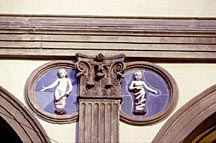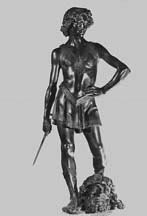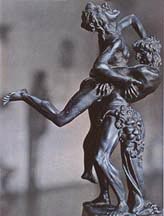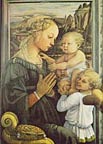

Fast Facts
Italian Renaissance architecture in 15th century Florence was based upon the theory, appearance, measurements and details of Classical World architecture, particularly Roman buildings.
Brunelleschi, the era's chief architect chose Classical components to humanize Christian and secular buildings. He proposed “A New Athens” be built to glorify and celebrate Quattrocentro Florence.
![]()
Florence Cathedral
![]()

Hospital of the Innocents, Loggia Facade
![]()

Hospital of the Innocents, Medallions
![]()
Italian Renaissance Sculpture reflects a sense of confidence, promise and well being.
Christian, secular, and civic subjects are combined with Classical World ideas, models and purposes.
![]()

David,1472-1475
![]()

Hercules and Antaeus, c.1475
![]()
The Neoplatonic Society, under the leadership of Marsilio Ficino, sought to assimilate Greek and Roman philosophies, models and texts into Christian theology. He and his followers believed that nature as an instrument of the divine provided a “stairway to God”; thus, Plato was embraced because he taught that the study of nature promoted harmony. Neoplatonism shaped the thinking of the society's sponsor, Lorenzo de'Medici (Lorenzo the Magnificent) and most of the powerful Florentine families who supported humanism, financially and philosophically. Donors enjoyed seeing images of themselves and family members incorporated into public works. Importance of the individual is seen in the painted figure as deemed appropriate by the artist and his patron.
![]()

The Tribute Money, 1425
![]()

Virgin with Angels, 1452
![]()
![]()
The Dream of Constantine - Bacci Chapel, 1452
![]()
Duke and Dutchess of Urbino, 1472-1473
![]()
![]()
Allegory of Spring, Primavera, 1482
![]()
![]()
![]()
![]() Go back to the Art 1B Stylistic
Categories
Go back to the Art 1B Stylistic
Categories
![]() Go back to the Art 1B Welcome Page
Go back to the Art 1B Welcome Page
![]() Go Back to the West Valley College
Homepage
Go Back to the West Valley College
Homepage
